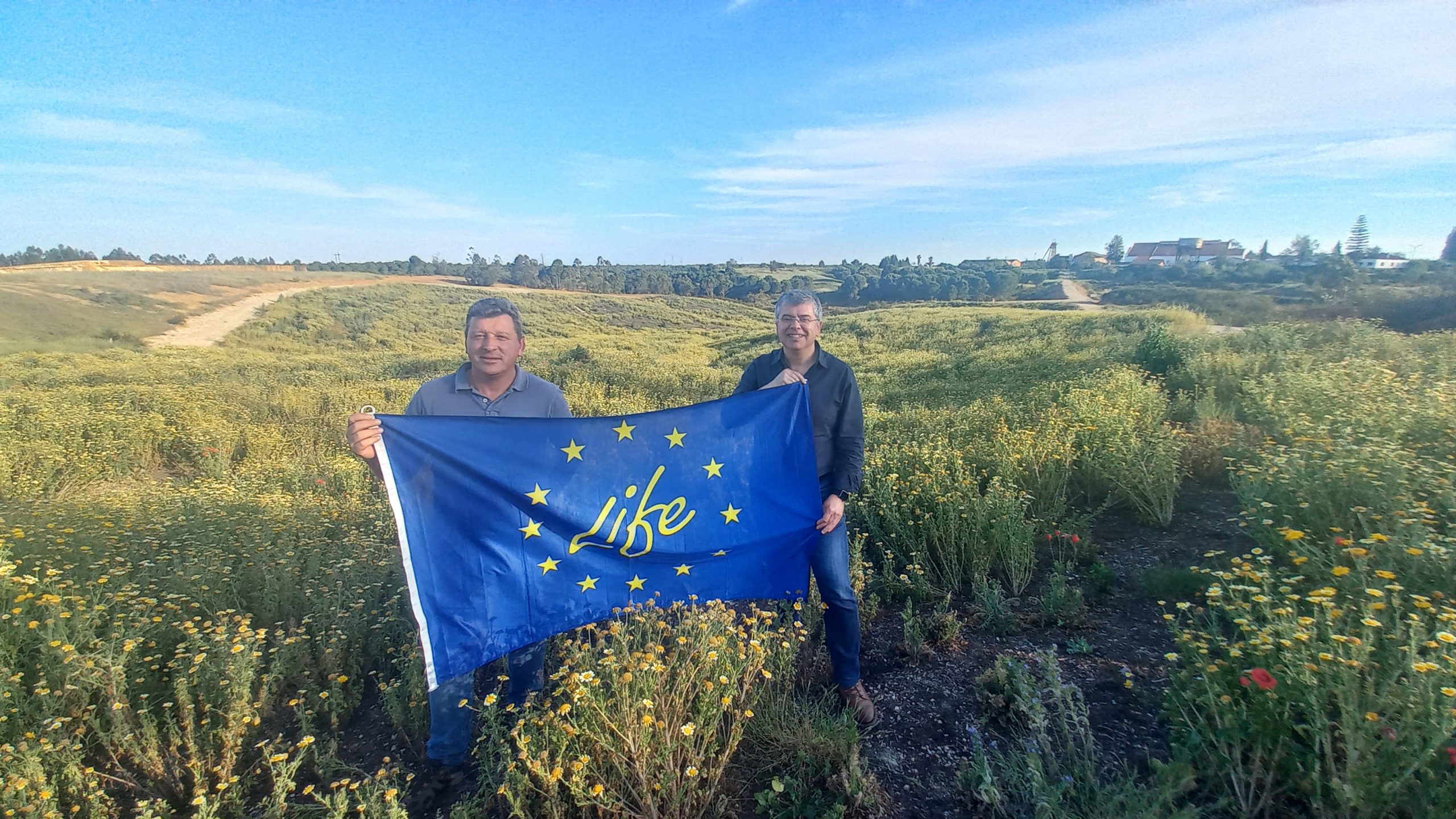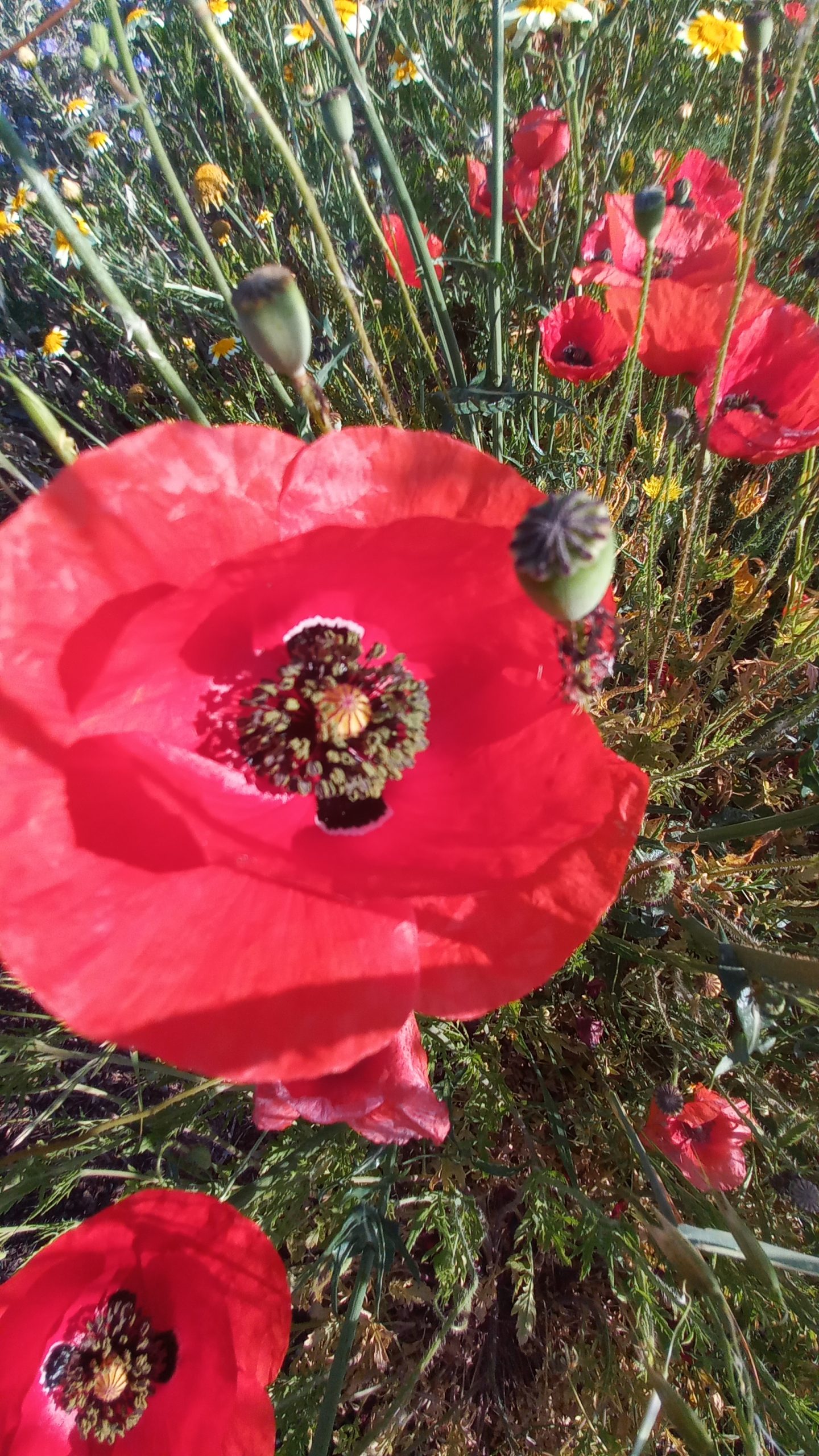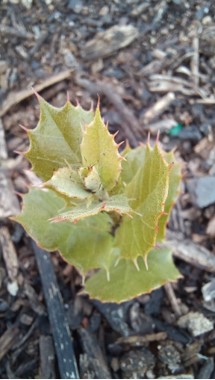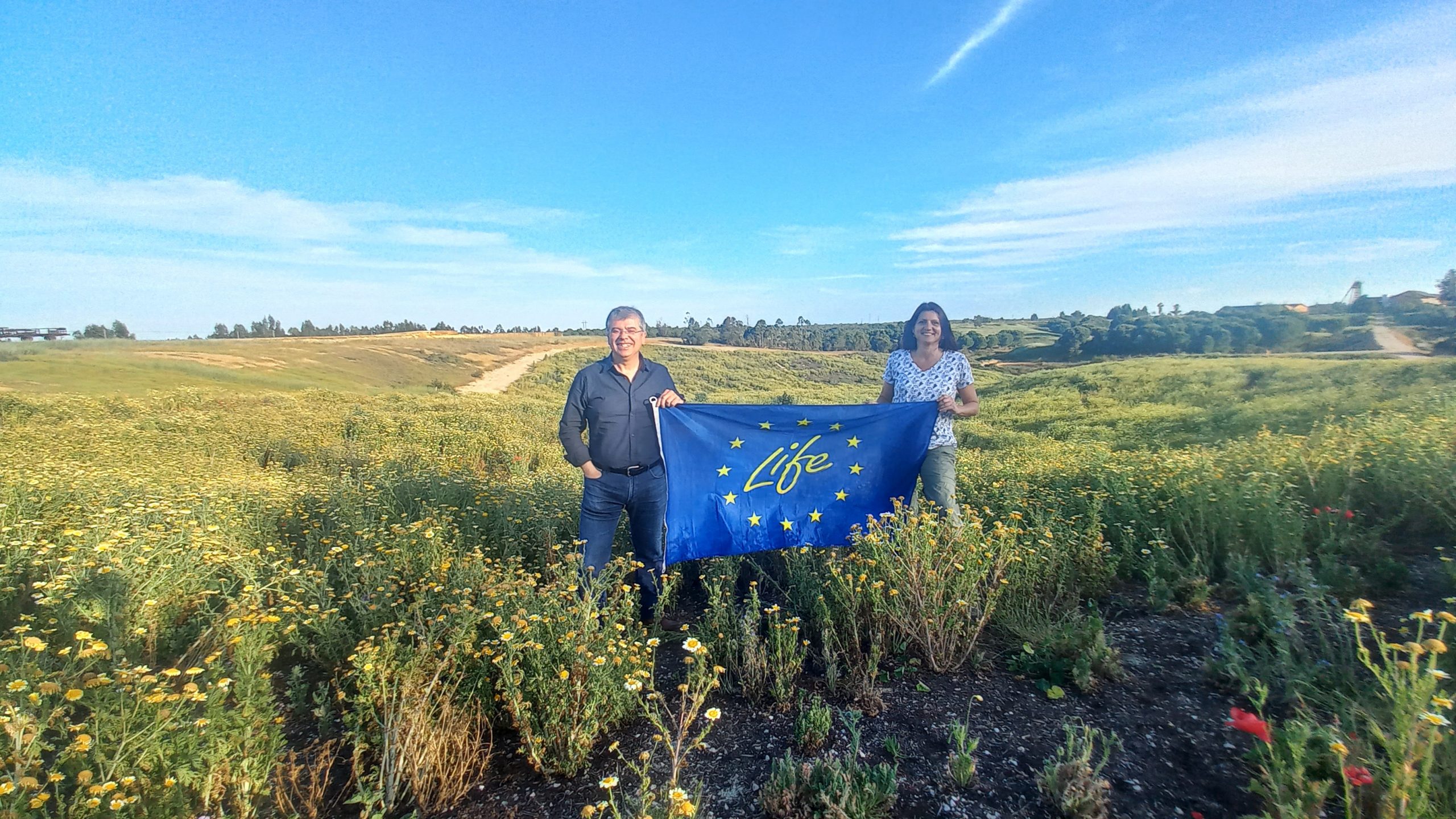It was with great enthusiasm that LIFE RIBERMINE received in May, at the Lousal Pilot Project, a representative of the company “Sementes de Portugal” (www.sementesdeportugal.pt, https://pt-pt.facebook.com/sementesdeportugal/), which was chosen to supply seeds of native plants from the Alentejo region, for the revegetation works in Lousal. Its representative was extremely pleased with the appearance of the field, highlighting the high germination rates and the visual quality of the landscape. The professionalism and dedication of “Semente de Portugal”, in obtaining and supplying viable seeds, its enthusiasm in the results obtained and the intention to continue accompanying the project, make this company an indispensable Stakeholder of the LIFE RIBERMINE project!

João Gomes (Sementes de Portugal) and Álvaro Pinto (Lousal Science Center) in the flowering fields of the Lousal Pilot Project.
It is recalled that, within the scope of the revegetation works carried out in the Lousal Pilot Project, for an area of 1.6ha, approximately 60 kg of seeds from 21 plants native to the Alentejo region (mainly herbs and some shrubs), and more than a hundred acorns of holm oak (Quercus rotundifolia L.) were used. The holm oak acorns were collected from trees in the existing dehesa surrounding Lousal. The remaining seeds were acquired from the company “Sementes de Portugal”, which, for many of the species, carried out collections in wild populations, thus guaranteeing the desired composition of the previously selected list of plants.

Calendula arvensis L. (cow-weed), ASTERACEAE.

Frutos de Calendula arvensis L. (cow-weed).

Papaver rhoeas L. (poppy), PAPAVERACEAE.

Lupinus luteus L. (yellow-lupine), FABACEAE. The plants of this botanical family are important nitrogen fixers, contributing to the soil fertility and quality.
In fact, despite the well-founded theoretical assumptions underlying the selection of the species to be used, given the pioneering and experimental character of the Lousal Pilot Project (geomorphological reconfiguration, edaphic amendment with the recreation of two soil layers – the deepest composed of a mixture of expansive clays and limestone gravel, and, the most superficial, by a mixture of semi-tanned horse manure, poultry manure granules, and a sterilized vegetable compost -) in practice, the revegetation results were, from the start, unknown. Thus, pioneer plants with wide ecological amplitudes were chosen, which, from the outset, were able to survive in different environmental and substrate conditions, in order to guarantee the vegetation cover of the area.

Chrysanthemum coronarium L. (marigold) and Papaver rhoeas L. (poppy), two of the most abundant species in the restored area.

Lavatera trimestris L. (mallow), MALVACEAE. Ruderal species with wide ecological tolerance, it colonizes different types of substrates (from disturbed fields to clayey, sandy or calcareous soils).

Echium plantagineum L. (cow-tongue), PLANTAGINACEAE.

Rebento de Quercus rotundifolia L. (azinheira), FAGACEAE.
During the month of November 2021, the seeds of plants of various botanical families, were spread on the ground by “freehand” sowing, and the acorns were buried in the soil. In the spring of 2022 (especially in the months of April and May), it was already possible to observe some results of the vegetation installation, whose success is clear in the full bloom of most species, which recreate the traditional flowering fields of Alentejo in this season! Here’s the photo record of some of the sown species!

Álvaro Pinto and Mónica Martins (team Life Ribermine/Lousal Science Center).

